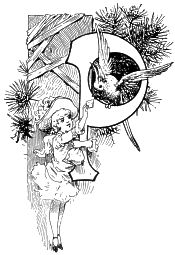

MAKING THE NORWOOD PRESSED BRICK.- page 56 -
LENTEOUS in attractions, there is no more interesting place in the village than the brick works. That is Norwood's one great industry and it has added to the ever-increasing fame of the suburb. Located on the tract just above Duck Creek, and at the junction of the B. & O. S. W. railroad, there could be no improvements in situation, and a spur from the main track affords easy facilities for loading the output into the cars for transportation by rail. "The Norwood Brick" is famous, and the process of its manufacture, a pleasing study. The plant of the Cincinnati Pressed Brick Company embraces seventy-five acres of ground. As 650,000 brick are figured to the acre, a foot deep, and excavations are made ten times that deep, there is clay enough there to last a hundred years or so! In its crude state the earth is of a yellowish hue, but the bricks come from the burning in exquisite tints of red ranging from dark to light pink. The clay shed is the first stopping point made in the art of manufacture. After the clay has been dried by ploughing and harrowing, it is carted into that spacious building to undergo a sweating process, as it lies piled up under cover waiting for the second operations. Over in one corner of this shed a pair of ponderous rollers, weighing two tons apiece, revolve in a great pan, and through its perforated bottom the clay, which has been dumped therein, sifts. The finer particles are carried automatically to a height of forty feet, by elevator cups, and emptied into the screen, which covers the hopper that feeds the brick-making machine, while coarser are returned to the dry pan to be ground once more under the heavy rollers. Not a drop of water is used, and from the dry powder there are pressed bricks, each one of which weighs seven and one-half pounds. Each brick undergoes a pressure of 150,000 pounds. The capacity of the machinery is 18,000 a day, and as the green bricks are automatically turned out, all it requires is help to move them away. They are taken directly to the kiln, the floor of which is a net of flues, and then piled up in such a manner that the fire may have full play through them, when the torch is ready to be applied. There are five kilns at the plant, each with a capacity of 200,000. With the kiln filled, comes the most important part of the work. Dry as those green bricks appear to be, there is nearly one-half pound of natural moisture in each one, and when the kiln is sealed, nearly fifty tons of water must be dried out before they are ready for burning. This process is called "water smoking," and is a gradual one. Low wood fires are kept burning from eight to eleven days, for an intense heat at that stage would crack and ruin the product. With the water smoking ended, then comes the firing with oil. Crude petroleum is used and vaporized by jets of steam, a revolving current of flame roars through the kiln, without cessation, for eight or nine days. Hot is a mild sort of word to use. Old Belzebub himself would need a fan within that fiery furnace. In the burning there is an eight or nine inch contraction, and from the settle the watchers know when it is time to put out the fires. The cooling off is as gradual as the drying out; but when the kiln is ready to be emptied, the sorting of the bricks is the biggest single item in the cost of manufacture. No less than fifteen shades are revealed—so rich and warm that it seems almost impossible to believe that the tints are nature's own.
In addition to the "native output", a buff brick is also manufactured. It is made from a blue Indian clay, the refuse from coal mines. Another novelty, a pink buff, is made from a central Ohio fire clay. In reds, buffs, browns and mottled all shapes of pressed brick can be had, and besides these about five million common bricks are made every year. When all the branches are in operation sixty men are employed, and it is a remarkable fact that since the plant opened (not quite three years ago), nearly all the output has been used in Cincinnati and vicinity. "The Norwood brick" has found a home market and has not been obliged to seek outside channels of trade. The Cincinnati Pressed Brick Company is officered as follows: W. A. Barker, President; F. D. Barker, Vice-President, and J. H. Barker, Secretary and Treasurer. The first two named are residents of Norwood, and their handsome home, on Park avenue, can be put in evidence to prove the possibilities of architectural beauty when their pressed brick is used. The Norwood Pumping station, the Cincinnati Club House, on Walnut Hills; the Methodist Book Concern, Albert Chatfield's new home, on Madison pike; the Hotel Alms, the German Old Men's Home, in Avondale, and St. Philip's Church, on Race street, Cincinnati, are only a few of the buildings in which the Norwood brick predominates. The company's down-town office is at 59 West Fourth, in the Fosdick Building. ——— – ——— |